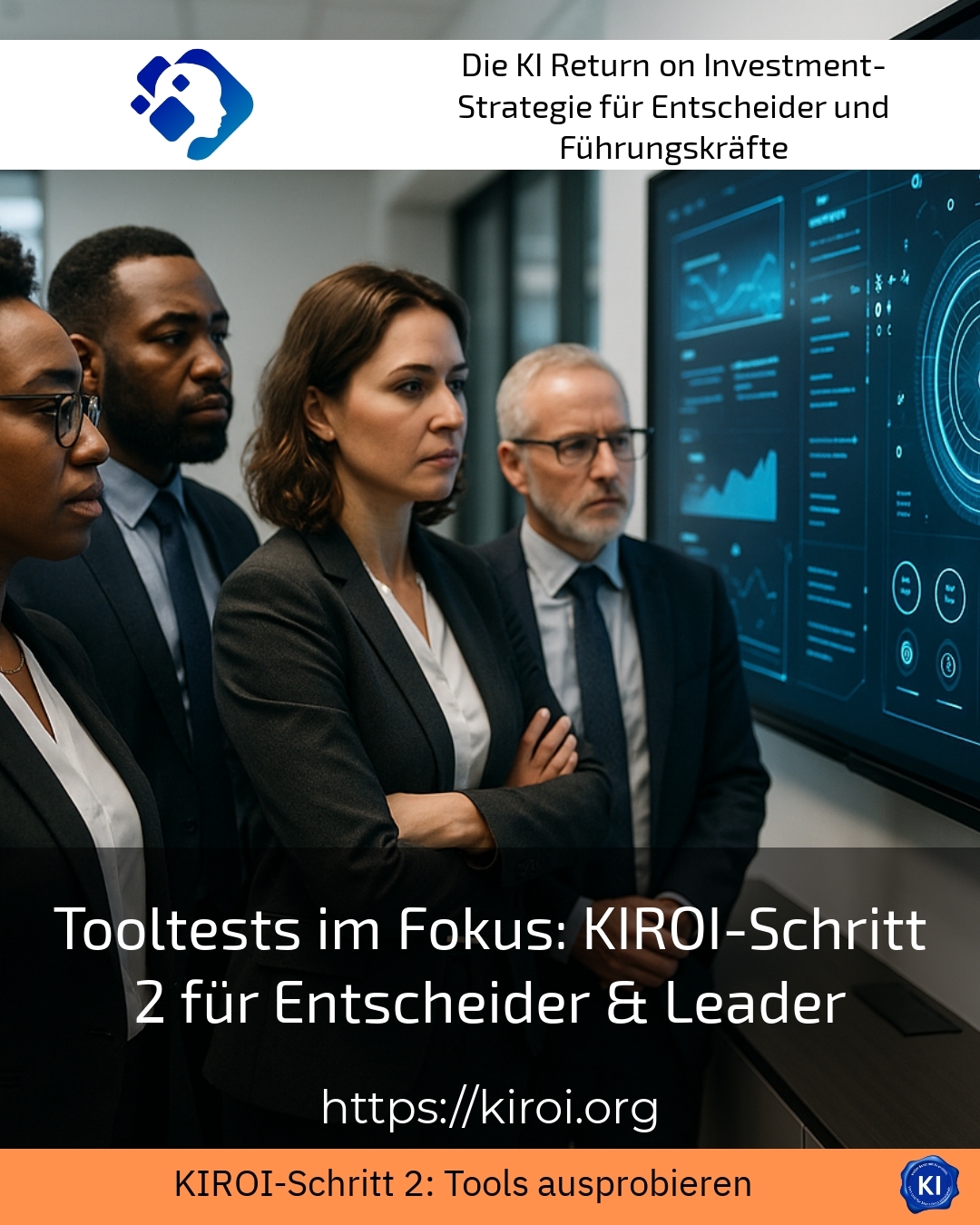In the context of digital innovation processes Tool tests plays an important role. This process receives particular attention in the second step of the KIROI model. Here, decision-makers and managers have the opportunity to systematically review tools and identify solutions that are a perfect fit for their organisation. The challenge is to select the tools that best meet the specific requirements and have the potential to effectively support day-to-day work from a wide range of offers.
Tool tests as a practical bridge between theory and application
A Tooltest in KIROI step 2 aims to test the technologies used under real-life conditions rather than just superficially assessing them. This enables decision-makers to understand how the tools prove themselves in their operational processes. This includes aspects such as user-friendliness, compatibility with existing systems and adaptability to individual company processes.
For example, a manufacturing company uses Tool tests, to test sensor solutions that recognise machine failures at an early stage. This allows maintenance to be planned in a more targeted manner and downtimes to be reduced. In the marketing sector, service providers are testing tools that analyse competitive data and enable new campaign strategies. And office organisations are testing automated solutions that make routine processes more efficient and save time resources.
Structured procedure for successful tool tests
The beginning of a successful Tool tests is always a careful requirements analysis. Managers define clear use cases and objectives before suitable tools are selected. This includes technical requirements and user needs.
An integrative approach involves various departments - from IT and specialist departments to end users. This allows different perspectives to be taken into account and practical tests to be carried out. It is not only the functionality that is important, but also the usability and integration into existing workflows.
In practice, this proves to be advantageous because it increases acceptance of the new solutions and provides valuable learning impulses for further development.
Practical examples from various industries
Support in logistics Tool tests for example, AI-supported demand forecasts. They enable more precise dispatch planning and reduce stock shortages. In the financial services sector, the Tooltest The tests are used in the selection of accounting software to evaluate interfaces and automation potential. In retail, such tests also help to optimise CRM systems and thus increase customer value.
BEST PRACTICE with one customer (name hidden due to NDA contract) One consulting firm used the Tooltest, to evaluate an AI analysis platform. The platform enabled precise analyses of complex data and at the same time promoted broad user acceptance within the team thanks to its intuitive operation.
Another example comes from production, where platforms for evaluating sensor data were tested which, in addition to analysis, also provided targeted recommendations for action and thus stabilised production processes.
Tips for a successful tool test in a corporate context
It is important for decision-makers to Tooltest as an iterative process. This means that technical and organisational aspects should be regularly reviewed and adapted to new requirements. The following recommendations for action have been established:
- Start with a precise definition of the project objectives and the use cases to be tested.
- Involve relevant specialist departments at an early stage in order to map a wide range of requirements.
- Test tools under the most realistic conditions possible in order to obtain reliable results.
- Document test results transparently in order to create a comprehensible basis for decision-making.
- If necessary, seek external support through coaching in order to professionally accompany and methodically optimise the test process.
Such impulses help to reduce uncertainties and make an informed choice.
My analysis
The targeted use of Tool tests as part of KIROI Step 2 offers managers an effective instrument for selecting suitable digital tools. The systematic review based on relevant criteria helps to identify tools that create added value in the long term. Practical examples illustrate how different requirements need to be taken into account across different industries. It also shows that accompanying coaching increases the quality of the selection process and facilitates the transfer to everyday working life. All in all Tool tests make an important contribution to the sustainable success of digital projects by promoting transparency, acceptance and efficiency.
Further links from the text above:
[1] Tool test in KIROI step 2: AI innovations in practice
[2] Tool test in KIROI step 2: How decision-makers find the best
[3] Tool test for decision-makers: clever use of KIROI step 2
[5] Tool tests in focus: How decision-makers master KIROI step 2
[6] Tool tests in KIROI Step 2: How decision-makers find the best
[7] KIROI step 2: Unleash AI potential with the tool test
For more information and if you have any questions, please contact Contact us or read more blog posts on the topic Artificial intelligence here.















